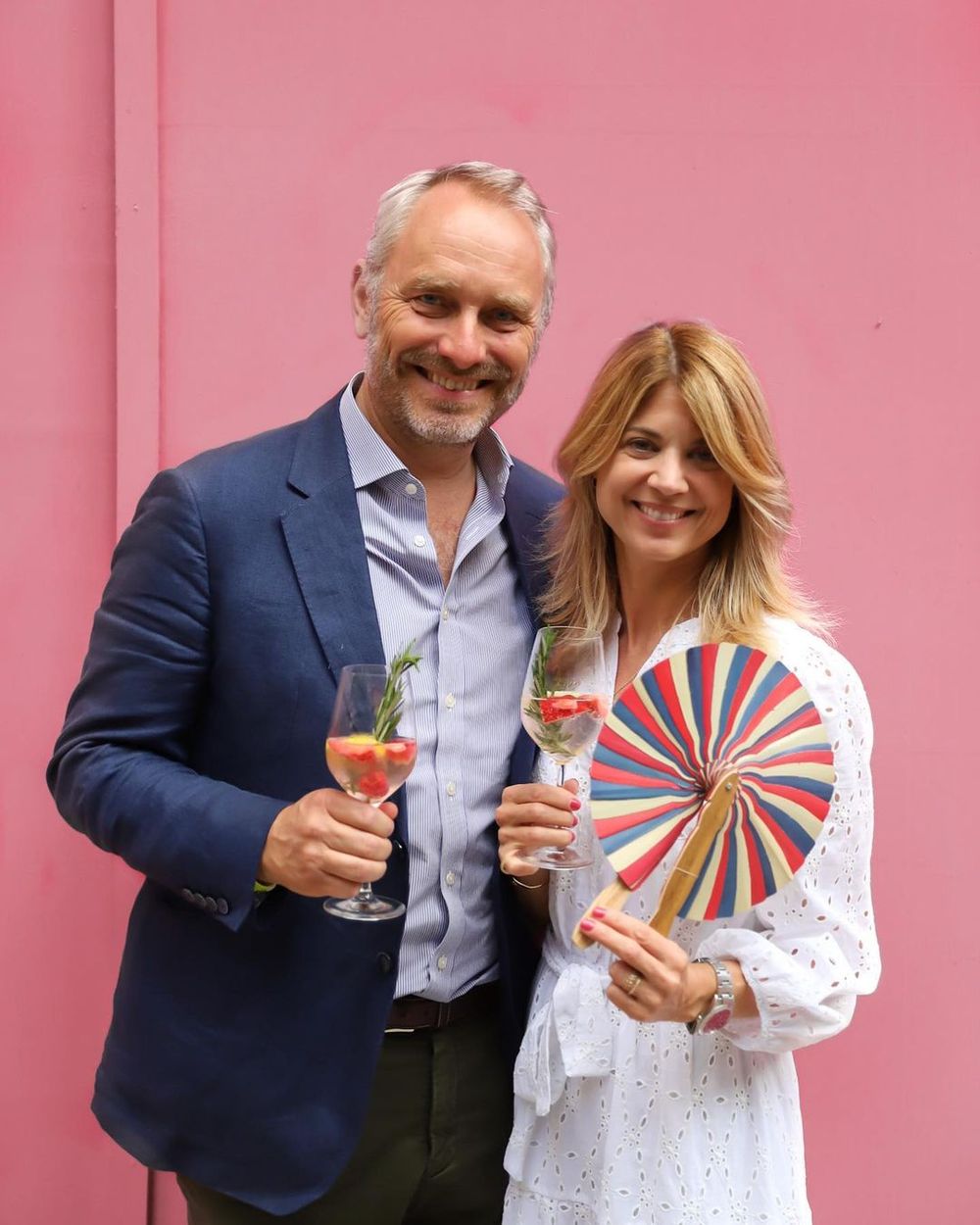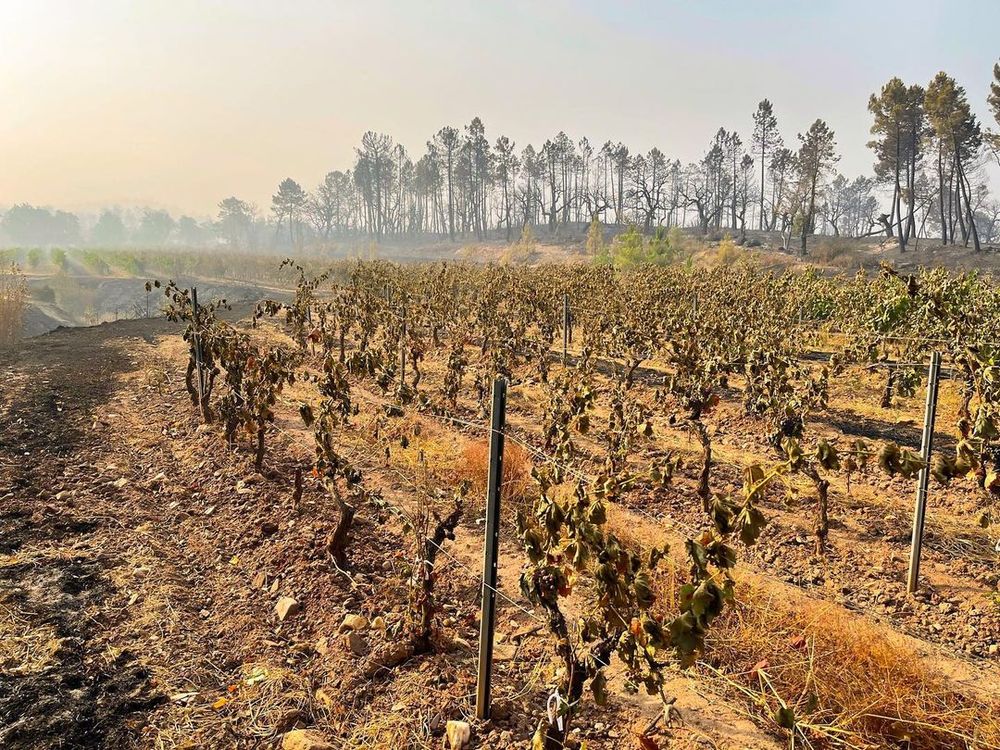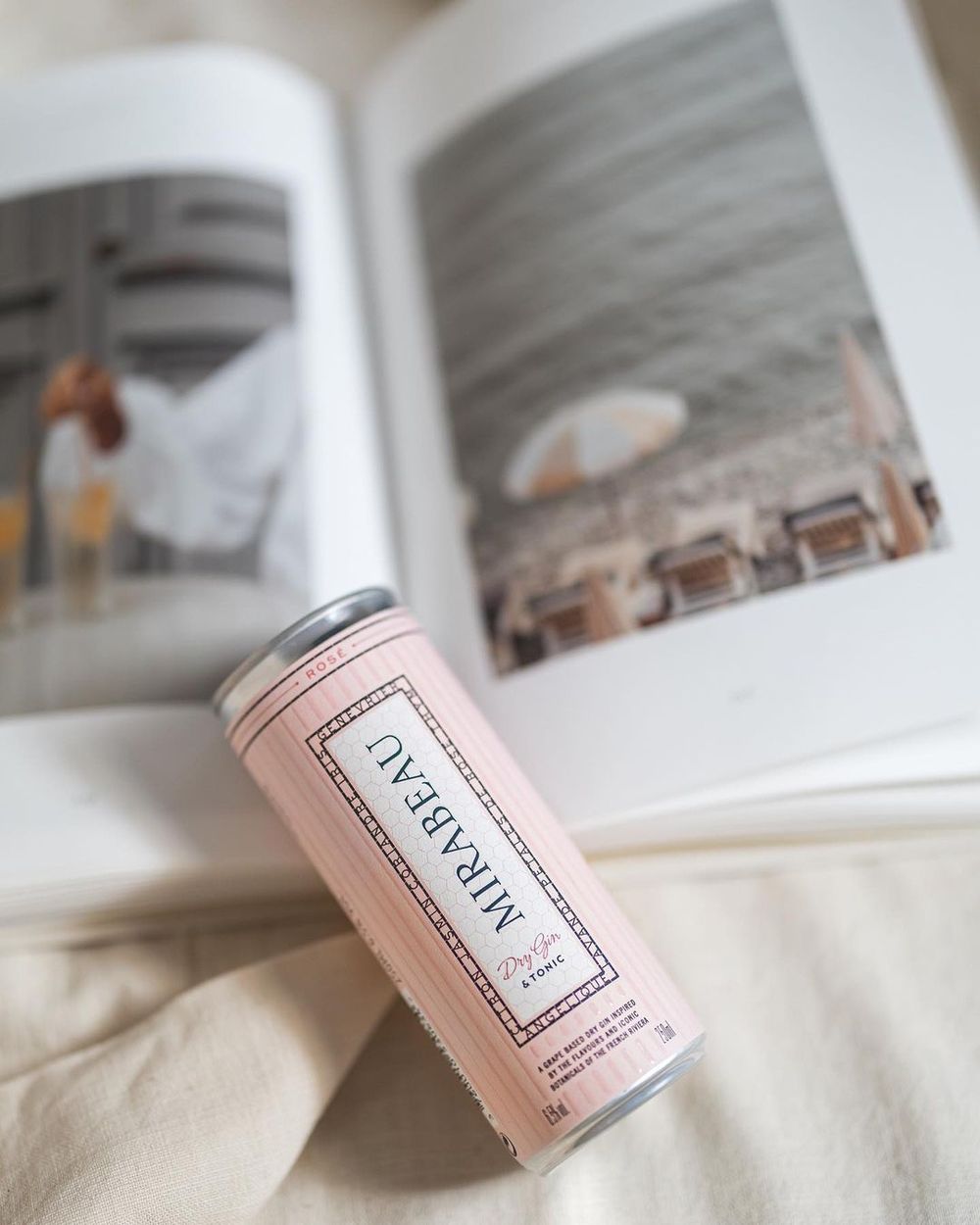“Both our rosé and gin inhabit that same aperitif moment,” Cronk explains, “That is probably the biggest crossover but again it comes back to what is the feeling our product and brand bestows on somebody? … it is that sense of place.”
It was a moment at a London trade fair when a buyer for a major hotel group tasted Mirabeau Gin for the first time that sums up its unique selling point.
“This F&B director from of one of the top hotels in London walked past the stand and one of my guys said ‘come and try our gin’, because he knew him and he replied ‘I don’t drink pink gin’,” Stephen Cronk explains from his Provence home, “and my guy said ‘no! this is a rosé gin it’s not a pink gin it’s dry, try it’, so he tried it and he said ‘my gosh we need this’ and it’s now listed at the hotel,”
Cronk is very quick to point out at the beginning of our interview that his gin is a dry Rosé gin and not pink.
“It gives the bartender so much more scope – to have something beautiful on the back bar and to create conversation – and then to create some rosé-coloured cocktails, which are so a la mode at the moment, Rosé Negroni and Rosé Martini the concept has worked so well timing wise.”

Stephen and Jeany Cronk: wanting to make a gin that they would drink
Cronk has just returned from a trip to the States where the focus is very much on drinking the gin neat, chiefly in a Martini, although its versatility as a spirit does allow a multitude of uses.
The US is now one of over 10 international markets that Mirabeau has found distribution in after a successful launch in the UK, with Waitrose being the first retail outlet just as it was with Mirabeau’s first rosé wine – Classic – 12 years ago.
Ironically it was making a low alcohol rosé for another big customer in the UK that led to the birth of the gin in the first place, Cronk explains.
“Jeany and I have always been big gin fans, and a friend of ours Alex Ignatieff, a trained sommelier and the original wine and spirits buyer at Harvey Nichols FifthFloor, had been badgering us for a couple of years saying we could make something really special. We liked the idea but wanted it to be a natural step – not jumping on the gin bandwagon.”
“We were making a wine called Forever Summer which is lower alcohol and vegan and to reduce the alcohol we put it through a reverse osmosis machine, taking it from 13% abv to 11%, and we ended up with a few hundred litres of pure alcohol byproduct that smelt like rosé wine. We were drinking it in the car park and it was a eureka moment, we thought this is it! We have to make a gin and we have to make it out of grapes – a byproduct of wine that‘s the connection – so we rang Alex and said let’s do this, so he joined us and became our Mr Gin.”
“We wanted to make a gin from a winemaker’s perspective – this is our interpretation as a rosé wine producer to make a great rosé gin.”

A dry rosé gin that captures the essence of Provence
Mirabeau Dry Rosé Gin is the latest chapter in the fascinating and fast-evolving story of Jeany and Stephen Cronk who followed their dream of making rosé in Provence and have since made one of the world’s best known rosé brands – a drinks brand that is heavily centred around a Year in Provence lifestyle.
There are other French gins, of course, and some that are either made in Provence or are heavily influenced by the South of France but Mirabeau Dry Rosé Gin is the first to be made with rosé wine being added to the distillate, a reason why even though it is a London dry gin by any other name it couldn’t be named as such.
Being dry was key.
“We wanted a dry gin and wanted it to be rosé colour,” Cronk continues, “all our wines are dry so we felt we had to be a dry gin as well. We were also cognisant of the pink gin trend and we wanted to differentiate and be at the other end of the scale.”
“We also wanted to be taken seriously by mixologists and bar tenders and wanted to be considered a true gin.”
In terms of flavour profile, another requirement was that the Cronks wanted it to reflect the spirit of the Riviera in much the same way that the rosé wines do. On the neck label the bottle promises ‘A sensory voyage to the French Riviera’ which is a reflection of the Cronks’ undying love affair with Provence but also an accurate description of the liquid. From the moment you open the bottle the botanicals of the region escape owing as much to the perfume industry as it does to spirits.
“When we looked at the botanicals available in this area you’ve got a very broad range you’ve got floral elements, herbaceous, it’s why it’s the home of perfume there are so many different styles you can make – but we wanted to make a gin that reflects the beauty of the region, inspired by the Riviera, but it also had to be a proper dry gin, leaning on London Gin but not too much.”
All in all there are 12 botanicals used: Juniper, Coriander, Lemon Peel, Iris Root, Angelica Root, Rosemary, Thyme, Lavender, Jasmine, Lemon Zest, Bay Leaves, Rose Petals – the most delicate botanical ingredients being vapour-extracted using a suspended basket technique that guarantees these precious flavours’ integrity and doesn’t mean that any one of them dominates the liquid.
The parallels with the perfume industry are further drawn by the shape of the bottle, which was realised as a classic perfume flacon bottle design by Jeany Cronk.
“Our approach to gin has always been lifestyle-driven, giving a regional sense of place and leaning on its heritage of perfume,” says Cronk.

The new gift pack featuring a small bottle of Mirabeau Gin and a silk twilly
“We have been inspired by everything about this region, the glory days of the Riviera – but also the art,” Cronk explains, referring us to a new gift pack they have produced which includes a silk twilly – the kind that Brigitte Bardot wore in the famous Terry O’Neill portrait and countless other wannabe starlets – alongside their newly launched 20cl Petite Dry Rosé Gin.
But, even with Ignatieff driving the development of the liquid and Jeany covering the marketing, Stephen personally found the process difficult, being essentially a wine producer.
“Developing a gin really was quite challenging – as a wine person I am more used to tasting a finished format. With gin, though, for a start it’s a higher alcohol product and we were going from the end of the ‘heads’ to the ‘tails’ and everything in-between neat. We had over 50 iterations. But Alex was so on it and helped steer it for us – and we ended up with a profile that we thought this is it. We found the sweet spot through this iterative process – sipping, smelling and discussing over the period of a year.”
The fact that it was a brand extension meant that the team had plenty of scope to be as creative as they wanted.
“It was a real labour of love – we didn’t have to do it and it is not core to our business which gave us a bit of headroom to make a lovely product.”
With a prototype in place and a mock-up of the packaging, it was time for the team to pay a visit to Waitrose again just like they had 12 years previously, this time with the spirits rather than the wine buyer who said he was pleased to give it a go.
“It was really important to find someone who gave us the reason to hit the green button on production,” says Cronk.
Before he headed back to Provence, though, he was given a key piece of advice.
“He told me that the most important thing is the quality of the neutral spirit that you put in your gin, the whole structure and the thing that you taste.”
Fortunately, they had already hit upon using grape spirit which had a number of benefits over using grain, according to Cronk.
“The mouthfeel you get from grape spirt is a roundness in the mouth and it gives you a bit more weight; we always wanted it to be a Martini gin and it is so much smoother. The other key benefit is the sustainable nature of grape spirit which is produced from upcycled grape skins post-crushing rather than growing grain.”

This summer the estate’s vineyards were hit by fire, but luckily none of the vines perished
Does the world need another gin?
Throughout the whole process Cronk admits that, just as he did when he first launched a rosé wine, he had to ask himself the question: ‘Why does someone want to buy my gin?’ Especially when there is simply so much choice.
“When we started off with our wine brand we didn’t think the world needed another rosé wine – 12 years ago there were maybe 1000 in Provence alone – but we believed (with the gin) that if it tastes great and it resonates with people and you can get them to love it and somehow it transports them then it’ll find a space, there’ll always be a gap in the market. It was important to make a gin that we feel we would drink.”
In this regard, Cronk says that gut instinct is much stronger than sheets of market data.
“The great thing about being a small family business is you don’t have to prove a concept with data but go on instinct,” he says.
“It’s more about inspiring people to try it – whether that’s through Instagram, press or a recommendation – you have to dare to be different, to try different things and once inspiration sells the first bottle, the liquid has to sell the second bottle it simply has to deliver on the visual cues.”
Unlike many gin start-ups, Mirabeau already had a head start in the spirits market on the back of its successful wine brand that trades on the inspirational but affordable luxury lifestyle. Mirabeau rosé lovers in the 50 territories where the wines are currently sold will have a natural curiosity about a new category, Cronk believes, and both the rosé and gin inhabit that same aperitif moment.
“That is probably the biggest crossover,” Cronk admits “But again it comes back to what is the feeling our product and brand bestows on somebody? … it is that sense of place.”
Cronk reveals two personal goals were hit when Harvey Nichols stocked the Mirabeau gin, on the back of Harrods stocking its La Réserve wine this year. And it is not just the UK where sales have been going well (it has sold out in Waitrose), the take-up in France has also been encouraging with distribution in both Galerie Lafayette and some key independent shops, while in Spain the gin is available in El Corte Inglés.
“Somehow our gin has struck a chord with buyers,” he says, “it has gone very well in retail, so now our big focus is on the on-trade… We are delighted to be working with the newly opened Maine restaurant in Mayfair, Juliette’s – the Rosé bar in Harrods and the creative Zetter Town House, it’s really exciting!”
“As we look to grow, the key is to go deeper in key markets in retail, on-trade and as a gifting product now with our 20cl bottle.”

Another brand extension for the off-trade
Spearheading this on-trade development is Emma Wykes who joined Mirabeau four weeks ago as chief commercial officer. Emma spent the last five years at Seedlip, the zero-alcohol market leader and her CV includes amongst many other things the launch of Martin Miller’s Gin.
For Emma one of the keys is the Cronks’ approach to provenance
“Their passionate approach to mindful farming, by embracing regenerative agriculture is key to engaging with the ever better informed consumer,” she says. “They have successfully created a brand that works with the environment and not against it and I look forward to working with the team to continue on this mission and lead Mirabeau into its next chapter as it continues to grow in strength.”
- Mirabeau Gin is available here for an RRP of £35.










































